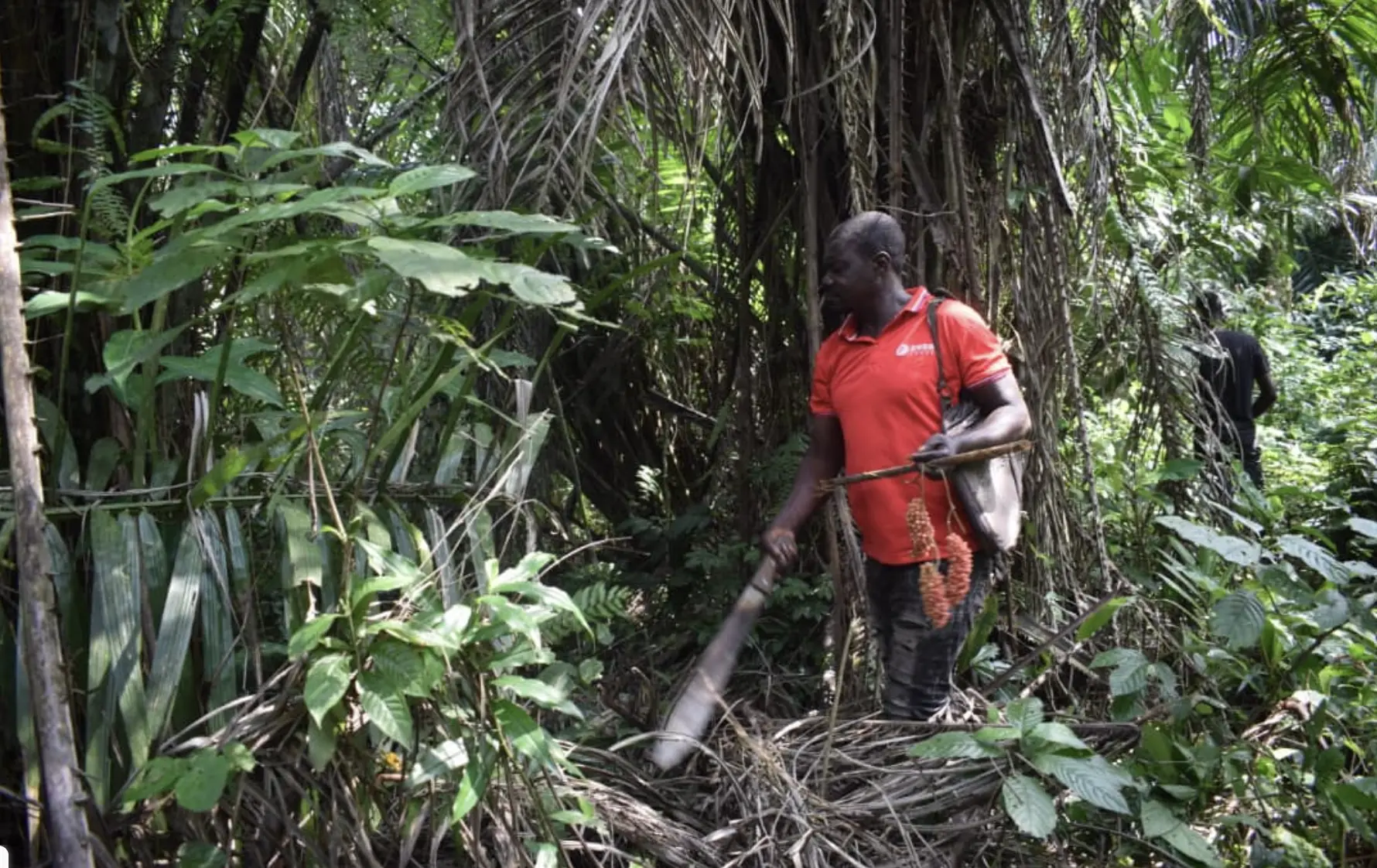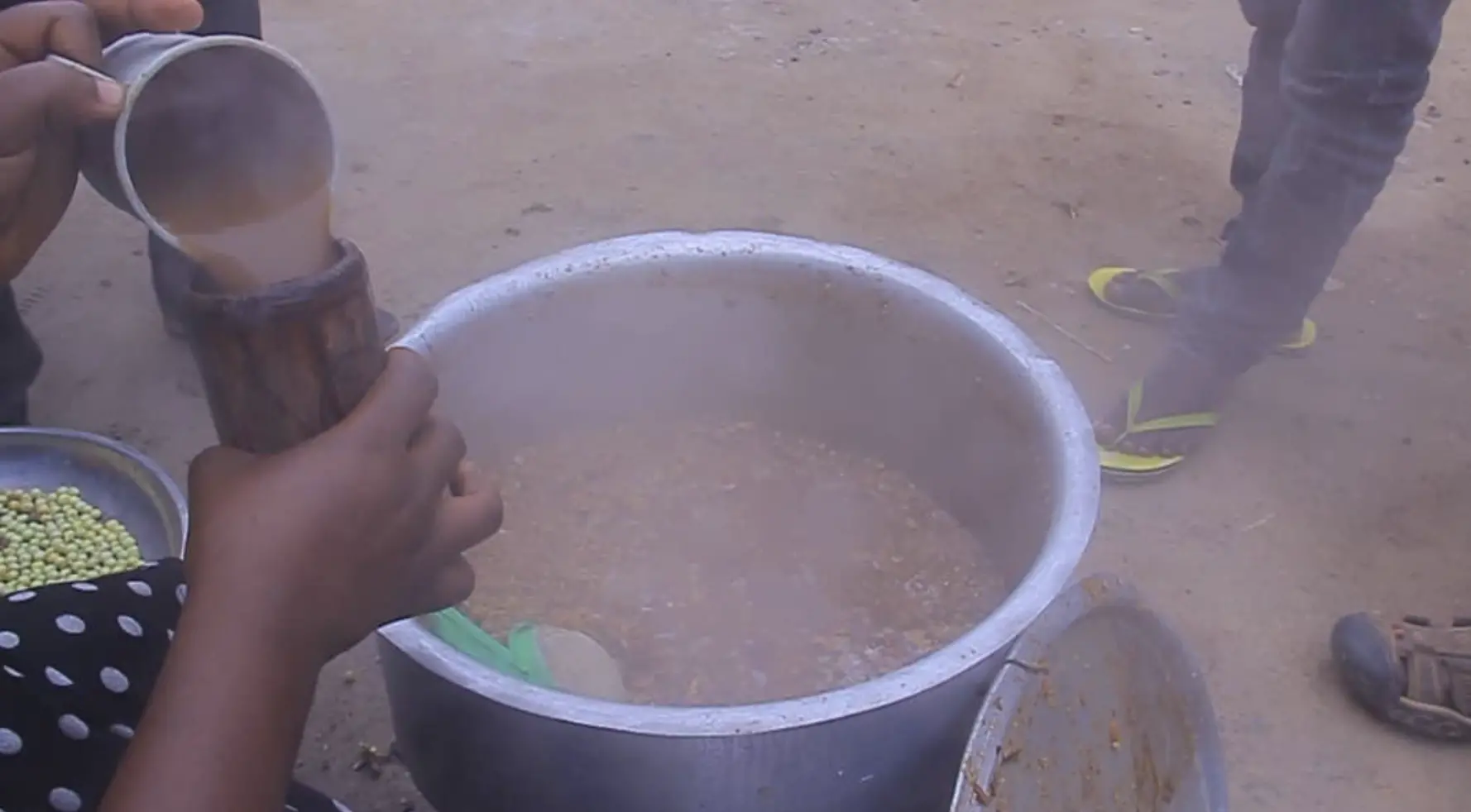This story excerpt was translated from French. To read the original story in full, visit Kis24.info. You may also view the original story on the Rainforest Journalism Fund website here. The RJF website is available in English, Spanish, bahasa Indonesia, French, and Portuguese.
Part one in this series can be found in English here and in French here.
In Kinshasa, fumbwa leaves are highly consumed. Their trade is part of life. This trade provides a living for many.
Using a giant knife that she sharpens with a file after each use, a woman who sells the leaves on a Kinshasa street cuts the small bundle of fumbwa into fine pieces. "I learned to cut fumbwa since I was a child, but once I got married, after my husband had difficulties in his job, I decided to start selling this fumbwa to help my family since 2009," she confides to us without stopping her vegetable-cutting.
But the scarcity of her product worries her because it makes the prices go up. "It's becoming increasingly rare, which is why they (the wholesalers) are selling us more and more small bundles. Everything here costs 4,000 Congolese francs (CF) or three bundles at 2,000 CF," she says, noting that she does not earn much.
The yield varies, but if she invests 22,000 FC plus 2,000 FC for transport, "God helping, I can have 15,000 FC of profit," she confides. And this is provided that her goods are sold the same day.
"There is no great profit. Taxes are getting more and more expensive and numerous, plus transportation is expensive. It only comes by air," the worker said.
She has a 30-year career in fumbwa sales. This trade has allowed her to provide for her children. "Health care, school fees, everything comes from this job. I even arranged my children's weddings through this work."






